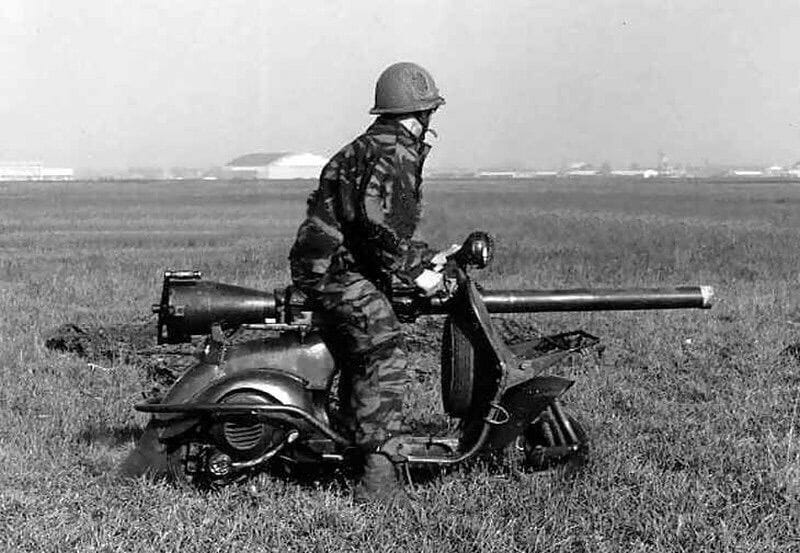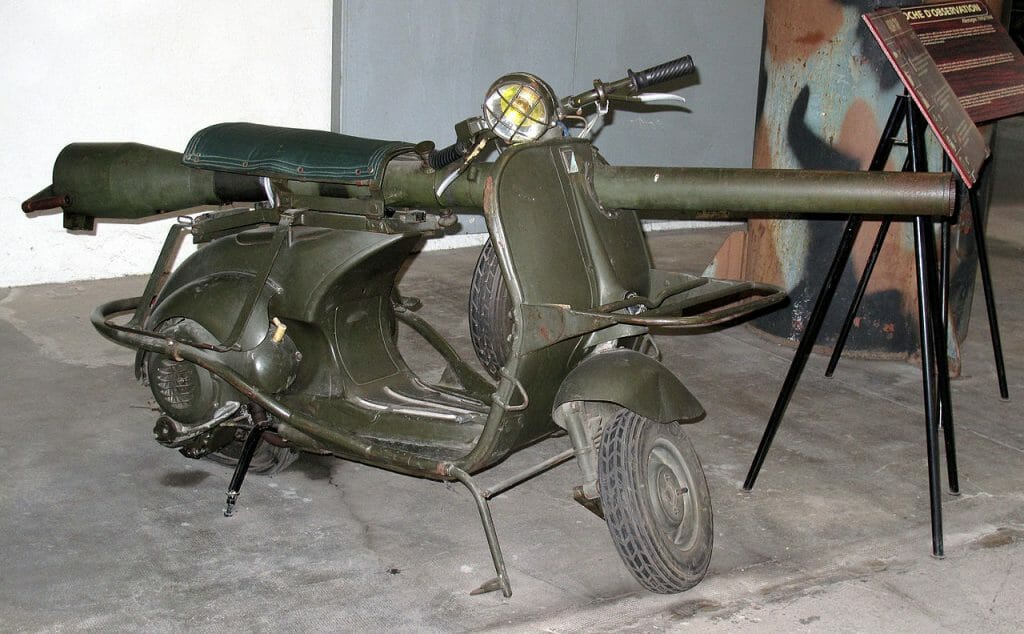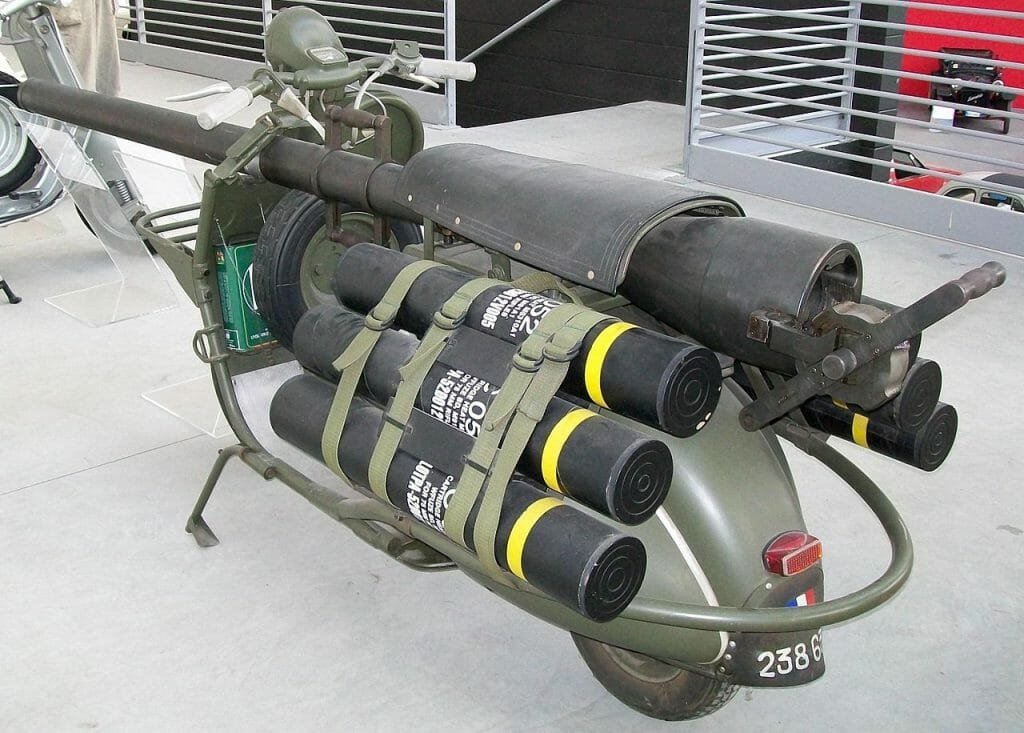Vespa is a famous Italian brand of scooters, produced since 1946. Vespa’s are still very popular today – they always attract the attention of passers-by as they whiz through the streets. However, the cutely stylish Vespa could also serve as a weapon of war.

Retro-inspired Vespa scooters nowadays are particularly popular with hipsters and tourists. That lovely design is easily recognizable and definitely attractive. Perhaps that’s why the mere thought that at one point in time some Vespa scooters were armed with anti-tank guns makes me smile.
In 1946, the First Indochina War broke out – Vietnam was fighting for independence from France. Although the French hoped to end this conflict quickly, it continued until 1954. France lost that war, but it learned many lessons.
One of those lessons was the need to have easily transportable military vehicles and weapons. That’s why the French decided to make a military scooter – an extremely light and cheap vehicle that could be air-dropped directly in the eye of the conflict. It was not an original idea – the US forces were parachuting scooters back in the First World War. Either way, in 1956, the Vespa 150 TAP was born. TAP stands for Troupe aéroportée – Airborne forces.

Vespa 150 TAP is a simple civilian Vespa scooter with a rifled 75 mm M20 anti-tank cannon. Although Vespa is an Italian brand, the military version of the scooter was produced in France by Ateliers de Construction de Motocycles et d’Automobiles (ACMA), Vespa’s licensed dealer in France. Vespa 150 TAP was not much different from the original, but it did have a reinforced frame, green paint job and an M20 anti-tank gun mounted under the raised seat. There is a deep cutout in the front fairing – that’s how they made room for the barrel of the 75 mm gun.
Obviously, Vespa 150 TAP is a very light vehicle, designed with air-dropping in mind. France used it in the 1954-1962 Algerian war. Two soldiers were assigned to one scooter – one was a gunner and the second one took the functions of the reloader. At least in theory, the gun of could be fired without the scooter stopping – M20 has little to no recoil and at the very least it was definitely possible to use it without taking it off the scooter first.

Shooting on the go would be something desperate or stupid for Vespa, so normal procedure was completely different. Before the attack Vespa 150 TAP would stop and its crew would take off the gun completely. It was set down on an extended tripod and then soldiers would prepare to fire at the enemy’s armoured vehicles. Thanks to its reinforced frame, Vespa 150 TAP could carry some extra ammunition, fuel and even other cargo, such as medical supplies.
Mechanically, Vespa 150 TAP is identical to its civilian brother. It has a 146cc single cylinder two-stroke engine, which propels the scooter to around 60 kph. Vespa was obviously slower than military motorcycles, but it was very light and easy to drag out in case it got stuck in mud or sand. Most importantly, Vespa 150 TAP was a fairly cheap machine, because scooters didn’t cost much and there was certainly no shortage of American M20 guns produced since the Second World War.

In total, around 600 Vespa 150 TAP scooters were produced in two series – in 1956 and 1959. They saw only limited action.




